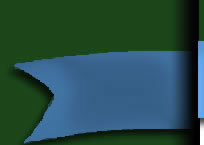| |
Education – Square Dancing
So, what is square dancing? Four couples start out in a square formation; each side of the square has one couple facing into the center. The dancers move about the square based on instructions from a caller. These instructions are from a set of pre-defined "calls" that direct the dancers into various formations and movement patterns. Eventually, everyone ends back at their starting (home) position.
Square dancing is not about footwork. (Walking is fine. Walking in time with the music is the ultimate.) Square dancing is about being able to quickly respond to each call, maintaining the flow intended by the caller. Sometimes that flow will be almost magical, so smooth you don't realize you've arrived back home. Sometimes the calls might be tricky, producing eight people staring at each other in confusion and laughter. Sometimes the challenge is speed – simple calls fired out in auctioneer staccato.
So square dancing is about concentration and teamwork. It creates lasting friendships, wherever you dance.
Terminology (the basic stuff):
- Square: A set of 8 dancers (4 couples) dancing as a team.
- Tip: Two sessions, typically, each session is determined by the length of a song. Squares stay together for the entire tip. After a short break couples typically form new squares for the next tip.
- Basic calls: A short list of easy calls, often used for party dancers where the caller assumes no square dance experience.
- SSD calls: SSD stands for "social square dancing." This set of calls has much of the variety provided by "Mainstream," without a few of the more difficult calls.
- Mainstream calls: A set of calls that a caller might choose from when calling at the Mainstream level. This set is the same everywhere in the world. If you know the Mainstream calls, you can dance most anywhere.
- Plus calls: An additional set of calls. At the Plus level, the caller can choose from both Mainstream and Plus calls (over 100 options). At most dances, the caller will announce the level (Mainstream or Plus) before each tip. Some clubs, and nearly all of California, dance only at the Plus level. (Or above. Yes, there are additional levels, starting with A1).
- Callerlab: The organization of square dance callers that maintains the list of accepted calls and definitions, teaches new callers, and licenses music for caller use.
- Round dancing: Ball room dancing with movements directed by a "cuer." Again, the instructions come from a pre-defined list, that gets longer as the dance level increases. Round dancers move around the room in large circular path, but otherwise operate as individual couples. Round dancing has nothing to do with square dancing, except that many clubs alternate between the two as a change of pace.
Square Dance Learning Aids
On-Line Student Aids
Student Aids (pdf files)
Callerlab is the caller organization that defines our square dance calls and arranges for music licensing.
Mainstream Lessons
The Timberline Toppers' Mainstream lesson program is held from January thru March.
- Refer to the calendar at the bottom of the home page to confirm the lesson locations.
- The links on this page (Student Aids) provide animated descriptions of calls. These are great resources for review.
- The 2023 classs syllabus (pdf file).
Plus Lessons & Workshops
Watch your e-mail for notices about free Plus workshops -- get faster, learn those odd calls, have fun.
Mainstream Workshops
2024 Mainstream Workshops start Jan. 16, 2024.
|








